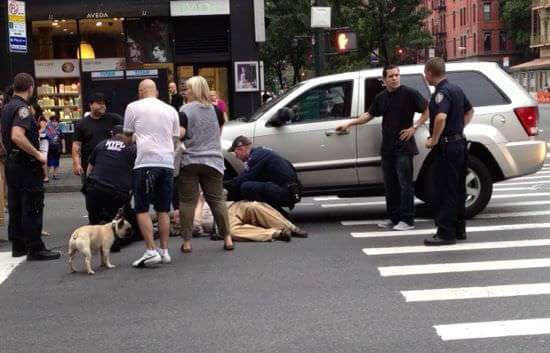In the intricate dance of urban life, pedestrians play a pivotal role, shaping the rhythm and dynamics of city streets. The legal obligation for drivers to yield to pedestrians underscores the symbiotic relationship in this urban ecosystem. This article explores the legal intricacies surrounding failure to yield to a pedestrian tickets in New York, delving into the legal framework, consequences, defense strategies, and broader considerations for pedestrian safety to get website
Introduction
In the labyrinth of bustling New York streets, the pedestrian-driven urban dynamics set the tone for traffic interactions. The legal significance of yielding to pedestrians is not just a matter of compliance; it’s a fundamental aspect of urban coexistence. Failure to yield to a pedestrian, therefore, holds both legal consequences and implications for the safety fabric of the city.
The Legal Framework
New York Pedestrian Right of Way Laws
Understanding the legal framework involves decoding distinctive crosswalk protocols, the intersection with traffic signal systems, and acknowledging pedestrian right of way even in unmarked crosswalks. Navigating these laws is paramount for drivers traversing the city.
Variability in Enforcement
Enforcement of failure to yield laws exhibits variability, influenced by officer discretion, challenges in proving violations, and jurisdictional differences. The nuances in enforcement underscore the importance of legal expertise in addressing failure to yield tickets.
Technological Surveillance
The integration of automated enforcement systems and video evidence in failure to yield cases adds layers of complexity. Crafting legal strategies to contest technological evidence becomes essential in navigating these cases effectively.
Consequences of Failure To Yield Tickets
Fines and Penalties
The immediate consequences involve monetary implications, with drivers facing fines and accumulating points on their driving record. Understanding these penalties is crucial for individuals dealing with failure to yield tickets.
Long-Term Driving Record Ramifications
Beyond immediate penalties, failure to yield violations leave a lasting mark on driving records, impacting subsequent offenses and potentially leading to an increase in insurance premiums. Mitigating these long-term ramifications requires strategic planning.
Safety Considerations
Delving into pedestrian injury statistics, collaborative efforts for urban safety, and community initiatives for pedestrian awareness highlights the broader safety considerations tied to failure to yield violations.
Defending Against Failure To Yield Tickets
Consultation with a Traffic Attorney
Engaging a traffic attorney brings expertise in traffic offenses, allowing for a comprehensive case analysis and tailored defense strategies. The importance of legal representation becomes evident in navigating the intricacies of failure to yield cases.
Establishing Mitigating Circumstances
Demonstrating unforeseen road conditions, considering pedestrian behavior, and showcasing due diligence in traffic navigation are key elements in establishing mitigating circumstances.
Utilizing Legal Expertise
Challenges to technological evidence, negotiation strategies, and comprehensive courtroom advocacy showcase the multifaceted approach of utilizing legal expertise in defending against failure to yield tickets.
Navigating Pedestrian Safety in NY
Urban Planning and Pedestrian Infrastructure
Enhancing crosswalk design, implementing traffic calming measures, and advocating for improved pedestrian infrastructure contribute to a safer urban environment.
Education and Public Awareness
Driver education programs, pedestrian safety initiatives, and collaborative efforts aim at raising public awareness for safer streets and improved traffic interactions.
Future Trends in Pedestrian Safety
Exploring advancements in traffic signal technology, innovative urban planning strategies, and continued advocacy for pedestrian rights point towards a future where pedestrian safety remains at the forefront of urban planning.
In conclusion, failure to yield to a pedestrian goes beyond a legal transgression; it’s a reflection of the intricate balance required in navigating the urban landscape. Understanding the legal, safety, and future considerations associated with this offense is crucial for both drivers and the broader community. Engaging legal expertise becomes not just a legal necessity but a strategic step towards a safer and more harmonious urban coexistence.




